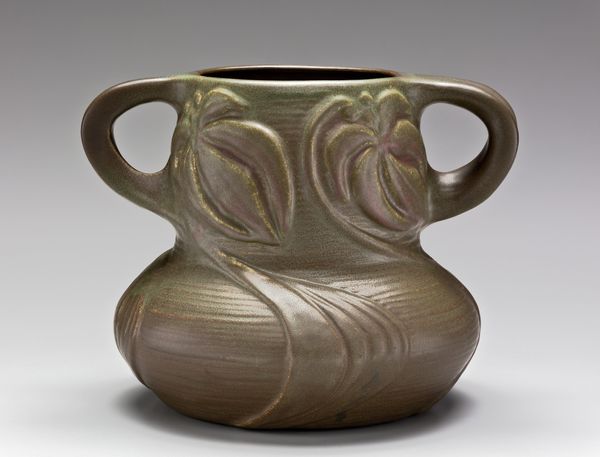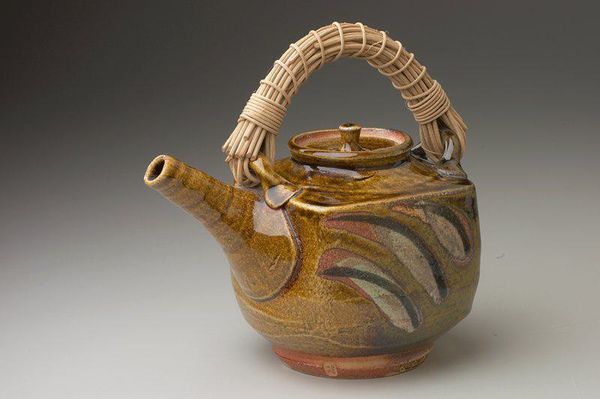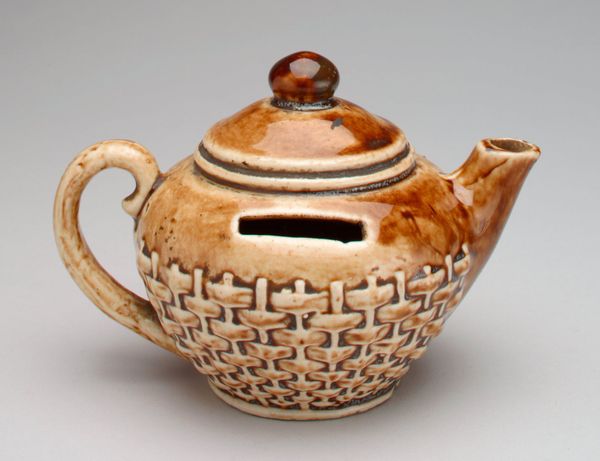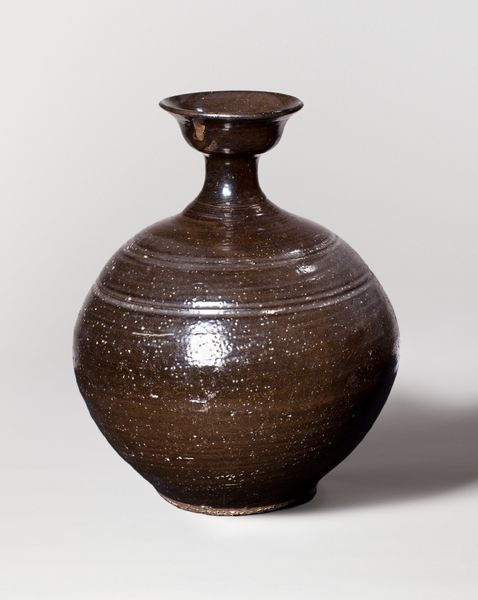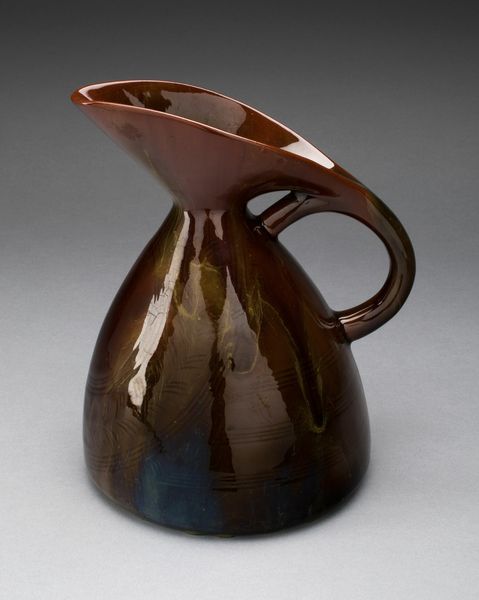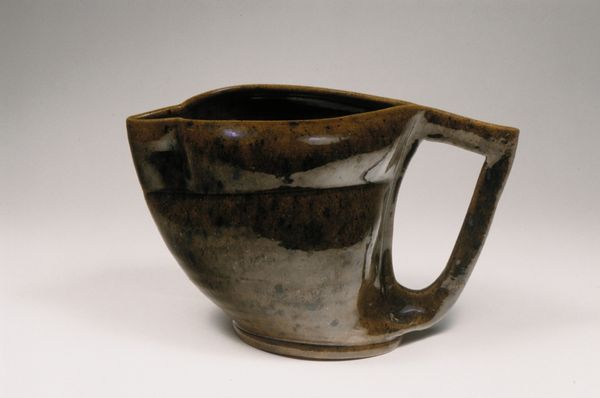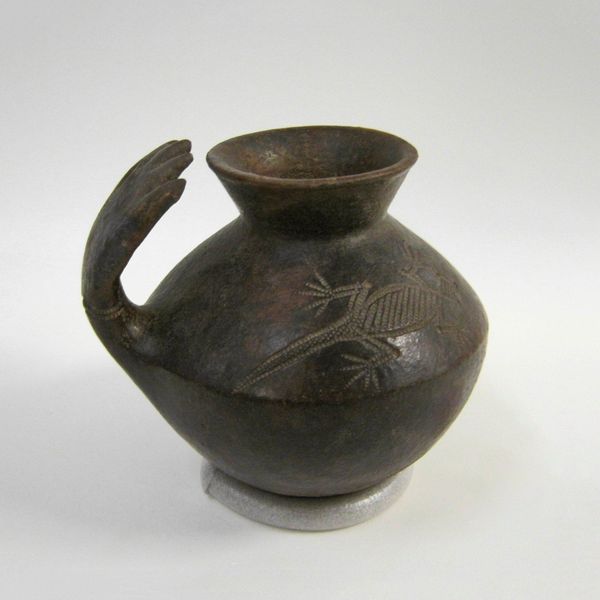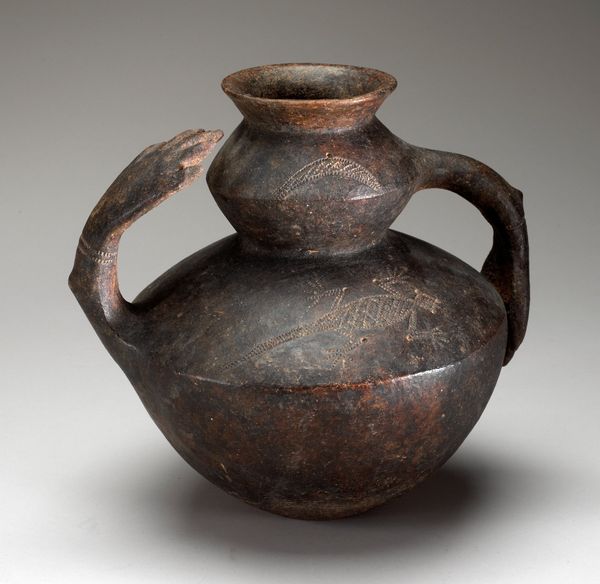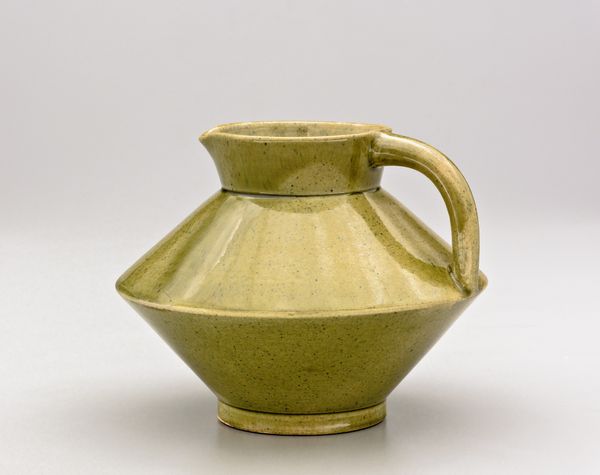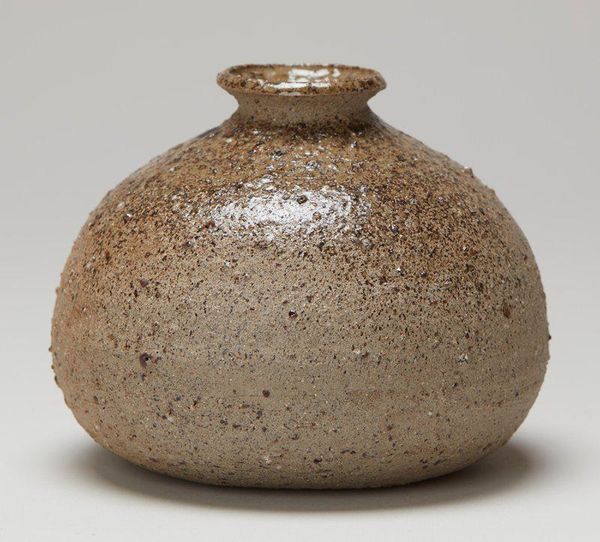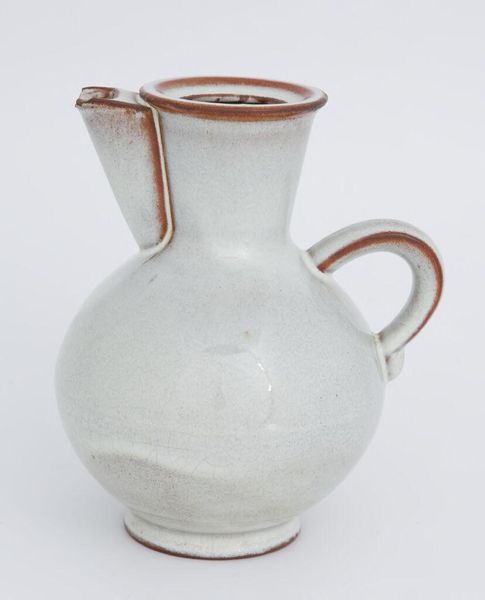
ceramic
#
3d sculpting
#
germany
#
egg art
#
ceramic
#
jewelry design
#
culinary art
#
appetizing
#
food illustration
#
stoneware
#
wash background
#
food art
#
food photography
Dimensions: 11 1/4 x 9 1/2 in. (28.58 x 24.13 cm)
Copyright: No Known Copyright
Curator: Richard Riemerschmid created this ceramic pitcher around 1905. It’s currently held here at the Minneapolis Institute of Art. Editor: It looks like something a woodland creature might use, doesn't it? All earthy and robust. It's the kind of piece you want to pick up and feel the weight of in your hands. Curator: Absolutely. Riemerschmid was a prominent figure in the German Jugendstil movement, which sought to integrate art into everyday life, blurring the boundaries between fine and applied arts. This pitcher exemplifies that ethos. Editor: That makes perfect sense. It's functional but still whimsical, like a fancy water balloon. I’m getting hints of the Arts and Crafts movement too. All that emphasis on handmade quality. It has got such charm! Curator: Yes, there are definitely parallels. The emphasis on craftsmanship and the use of natural motifs align with Arts and Crafts principles. Riemerschmid’s design incorporates stylized floral patterns, adding an organic touch. And consider its social context. At the time, there was a big push to elevate design and make well-crafted, beautiful objects accessible to a broader public. Editor: Right, like saying even a humble pitcher can be art. It’s so pleasing to look at; those plump circles make you wanna poke them! It really challenges the notion of art being separate from everyday stuff. Imagine having this on your breakfast table. I bet milk would taste amazing from it! Curator: Precisely. By situating design within reach, artists like Riemerschmid were, in a way, democratizing aesthetics. He advocated for affordable, well-designed products accessible across socio-economic lines. Editor: I love that. There's a rebellious undercurrent there – challenging the old order just by making lovely, usable things for everyone. It feels optimistic and refreshing even today. Curator: Indeed. Looking at this piece through the lens of contemporary design theory, we see Riemerschmid as a pioneer who saw art as enmeshed with political ideals and social transformation. Editor: He has inspired me to look at the most basic thing with fresh eyes. Everything has potential, huh? It all goes to show that objects are more than what we give them credit for. Curator: Indeed.
Comments
minneapolisinstituteofart almost 2 years ago
⋮
Richard Riemerschmid worked as an architect and a designer of furniture, glass, ceramics, metalwork and textiles during his long career. He was a founder of two design movements in Munich, the Vereinigte Werkstätten für Kunst im Handwerk (United Workshops for Arts and Crafts, 1897) and the Deutscher Werkbund (German Workers Alliance, 1907), through which he promoted his philosophy that well-designed objects should be mass produced for the general public. He also served as director of the Munich Kunstgewerbeschule (Decorative Arts School) from 1913 to 1924 and two years later established the Werkschule in Cologne. In this pitcher, Riemerschmid has combined a modernist approach to the form of the pitcher with the stylized applied vine motif in an object which looks handmade yet is produced by machine.
Join the conversation
Join millions of artists and users on Artera today and experience the ultimate creative platform.
